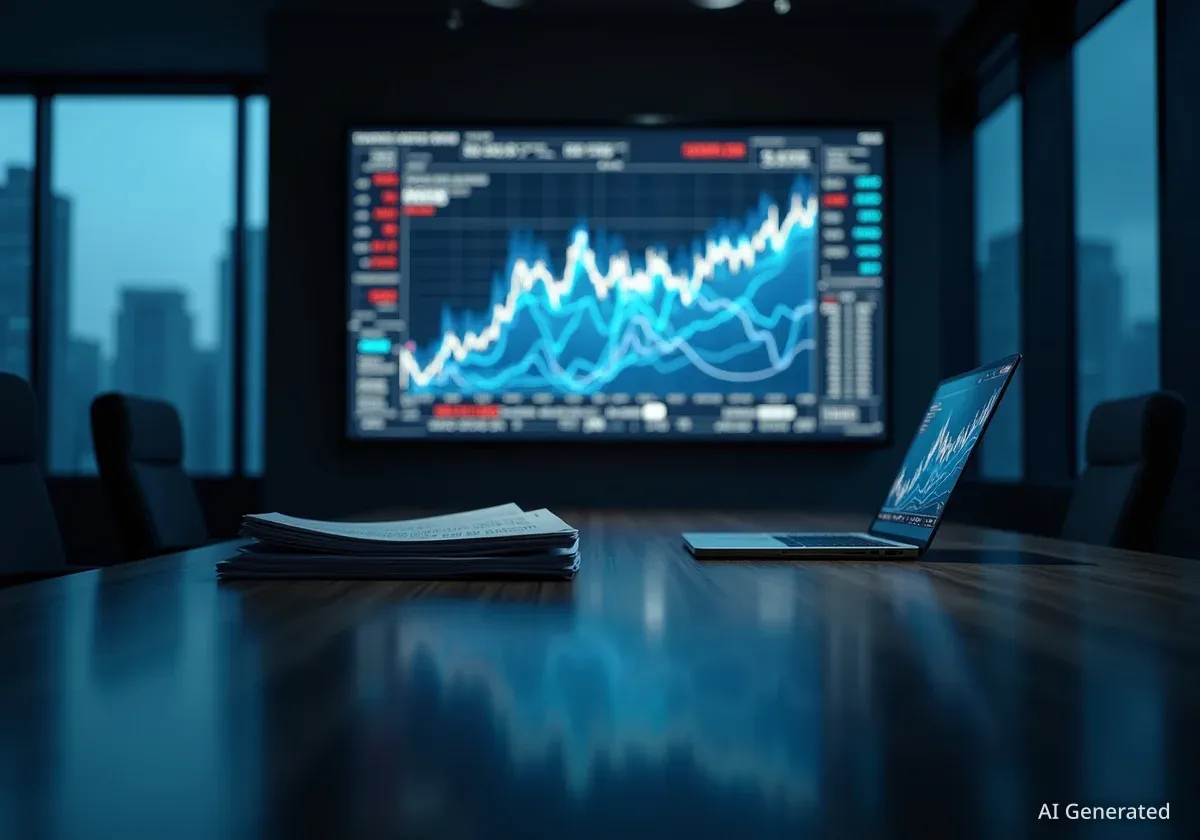Nvidia and OpenAI are in discussions for a partnership that could see the chipmaker invest up to $100 billion into the artificial intelligence firm. This potential deal, alongside other significant capital injections into the AI sector, is prompting discussions among market observers about the possibility of an investment bubble reminiscent of past technological booms.
Key Takeaways
- Nvidia is considering an investment of up to $100 billion in OpenAI, which would be the largest venture capital investment ever.
- The massive scale of spending in the AI sector is drawing comparisons to historical tech bubbles, such as the dot-com era.
- While OpenAI projects $13 billion in revenue for 2025, the investment figures far exceed current earnings, a common but notable feature of venture-backed growth.
- Broader economic factors, including new tariffs and the potential for a U.S. government shutdown, are contributing to market uncertainty.
Unprecedented Capital Flows into AI
The technology sector experienced a volatile week following the announcement of a potential landmark deal between Nvidia and OpenAI. The proposed partnership involves Nvidia investing as much as $100 billion to supply the AI research company with chips for training and operating its models.
If the full amount is committed, this would set a new record for the largest single investment in a venture capital-backed company. OpenAI already holds the previous record after securing a $40 billion investment in March.
This development comes shortly after other major financial moves in the industry. Nvidia recently invested $5 billion in Intel, and Oracle reported strong results driven by demand from OpenAI, highlighting a circular flow of capital within the sector.
A Pattern of Heavy Investment
The rapid succession of multi-billion-dollar deals underscores the immense amount of capital being directed toward AI infrastructure and development. Companies are spending heavily to secure the computational power necessary to build and run advanced AI models, with chip manufacturers like Nvidia being primary beneficiaries and key investors.
Historical Parallels and Market Caution
The sheer volume of investment in artificial intelligence is causing some analysts to draw parallels with previous technology booms that eventually led to market corrections. While AI is widely considered a transformative technology, history offers cautionary tales.
Past periods of rapid technological advancement have often seen investment levels that far outstripped the economy's immediate ability to absorb and monetize the new technology. This pattern has been observed in various historical contexts.
- The British railway boom of the 1840s saw massive investment in rail infrastructure that ultimately exceeded practical demand, leading to a financial collapse.
- The telecoms bubble at the turn of the 21st century involved immense spending on fiber-optic networks, resulting in a market crash when revenues failed to meet expectations.
Identifying a market bubble before it bursts is notoriously difficult. However, the disparity between the capital being invested and the current revenues of the companies involved is a factor that warrants careful consideration from investors.
Revenue vs. Investment
According to reports from CNBC, OpenAI's Chief Financial Officer, Sarah Friar, estimates the company will generate approximately $13 billion in revenue in 2025. While a significant figure, it is dwarfed by the potential $100 billion investment from Nvidia. This strategy of investing heavily ahead of revenue is standard for high-growth, venture-backed businesses, but the scale in the AI sector is unprecedented.
Infrastructure Demands and Economic Headwinds
The surge in AI development has created secondary effects, most notably a massive increase in demand for electrical power. Data centers, which house the servers running AI models, are consuming ever-larger amounts of energy, a trend that has benefited utility companies and independent power producers over the past year.
However, Morningstar's utilities research team notes that not all companies in the sector will benefit equally from this boom. A new report from the team details the specific impacts of data center demand on the energy market, helping investors identify which companies are best positioned.
Tariffs and Global Market Jitters
Adding to market complexity, tariffs re-emerged as a significant topic. President Donald Trump's announcement of a 100% tariff on branded medicines from certain regions caused a sharp reaction in global healthcare markets.
The Morningstar Developed Markets Europe Healthcare Index fell 3.8%, while the Morningstar Asia-Pacific Healthcare Index dropped 3.3% over the week. Despite the sell-off, Morningstar senior healthcare analyst Jay Lee suggests the long-term impact may be limited due to existing trade agreements, current inventory levels, and ongoing investments in U.S.-based manufacturing by pharmaceutical firms.
Navigating Broader Economic Uncertainty
Beyond specific sectors, the wider economic landscape presents its own challenges. Recent data from the August Personal Consumption Expenditures (PCE) Price Index showed inflation was in line with expectations, though still above the central bank's target. A surprise upward revision of second-quarter GDP to a 3.8% annual growth rate pointed to a resilient economy, driven by strong consumer spending.
"We have learned from previous shutdowns that the majority of the economic damage is temporary, and investors and the Fed are likely to discount the immediate impact."
The possibility of a U.S. government shutdown also looms, which could delay key economic reports like the upcoming employment data scheduled for October 3. While past shutdowns have had a mostly temporary economic impact, the political climate could create unnerving headlines and market volatility.
In this environment, market experts advise investors to remain focused on long-term strategies. Samantha Lamas, a senior behavioral insights researcher for Morningstar, recommends reviewing strategies for handling economic uncertainty to avoid making reactive decisions based on short-term news cycles.





